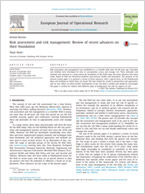 Silvio Angius, Carlo Frati, Arno Gerken, Philipp Härle, Marco Piccitto, Uwe Stegemann
Silvio Angius, Carlo Frati, Arno Gerken, Philipp Härle, Marco Piccitto, Uwe Stegemann
McKinsey & Company
Sinopse: Why did sophisticated risk management tools fail to predict the 2008 crisis or at least safeguard financial institutions from its effects? Executives, shareholders, and risk experts have argued this question at length, and one important conclusion is disturbingly simple: managers relied too heavily on short-sighted models and too lightly on their own expertise and insight. As management shifts from wondering what hit them to optimizing returns in the ongoing recovery, the temptation is to allow risk management to slip down the list of priorities. Returning to business as usual, however, would be a serious mistake. If anything is to be learned from the crisis, it is that nothing substitutes for human judgment in evaluating business risks and setting the right course of action, in good times as well as bad.
Financial institution executives and managers must understand, in a systematic and comprehensive way, the risks associated with their business. The best way for managers to build this knowledge is by reaching deep into an organization for insight and monitoring key economic indicators that provide foresight on structural risk – the key risks that influence in a decisive way a financial institution’s P&L statement and balance sheet.
